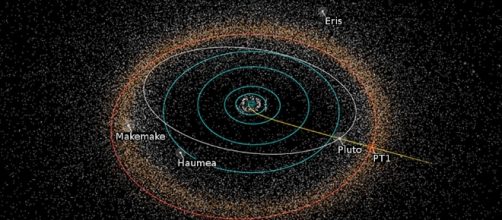NASA´s officials have given authorization for continuing space exploration with new horizons towards a Kuiper Belt object known as 2014 MU69. The encounter with the deep space object is planned to occur in January 1, 2019. This target was selected as a new destination for New Horizons in 2015.
2014 MU69
This minor planet was discovered on June 26, 2014 using Hubble Telescope, while surveying a suitable object in the Kuiper Belt for New Horizon´s next target. 2014 MU69 is believed to be 30-45 km (20-30 miles) in diameter with an orbital period of 293 days and low inclination and eccentricity.
New Horizons
This mission is providing new understanding of the objects located in the Kuiper Belt. It was launched on January 1, 2006. In February 2007 it flew by Jupiter -- recently being visited by Juno spacecraftfor a gravity assist and new scientific data. In the summer of 2005, during a flyby of Pluto, it performed a six month reconnaissance of Pluto, reaching closest approach on July 14 2015. Now, the spacecraft is projected to fly in the direction of its next target -- 2014 MU60 -- more or less one billion miles into the Kuiper Belt.
As part of the plan, Dawn spacecraft is planned to remain at the Dwarf planet Ceres, instead of going to the main belt asteroid Adenoma. Scientists think that monitoring Ceres, especially as it reaches perihelion, may provide more scientific new findings than a pass by Adenoma.
Other missions awaiting extensions
Other missions for space exploration are awaiting approval for extensions, based on available budgets. Some of these missions include; Mars Volatile Evolution (MAVEN), the Mars Reconnaissance Orbiter (MRO), the Mars Odyssey Orbiter, the Opportunity and Curiosity rover forMars´exploration.the Lunar Reconnaissance orbiter (LRO) and the European Space Agency´s Mars Express Mission, supported by NASA.
Using Hubble Telescope, Scientists have found four unknown moons orbiting Pluto; Hydra, Nix, Styx and Kerberos. A closer approach into these icy bodies is thought to disclose science information about the origins and evolution of Kuiper Belt frosted bodies.

